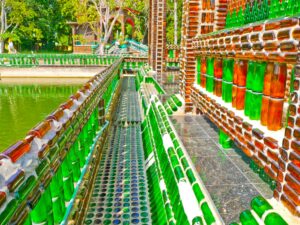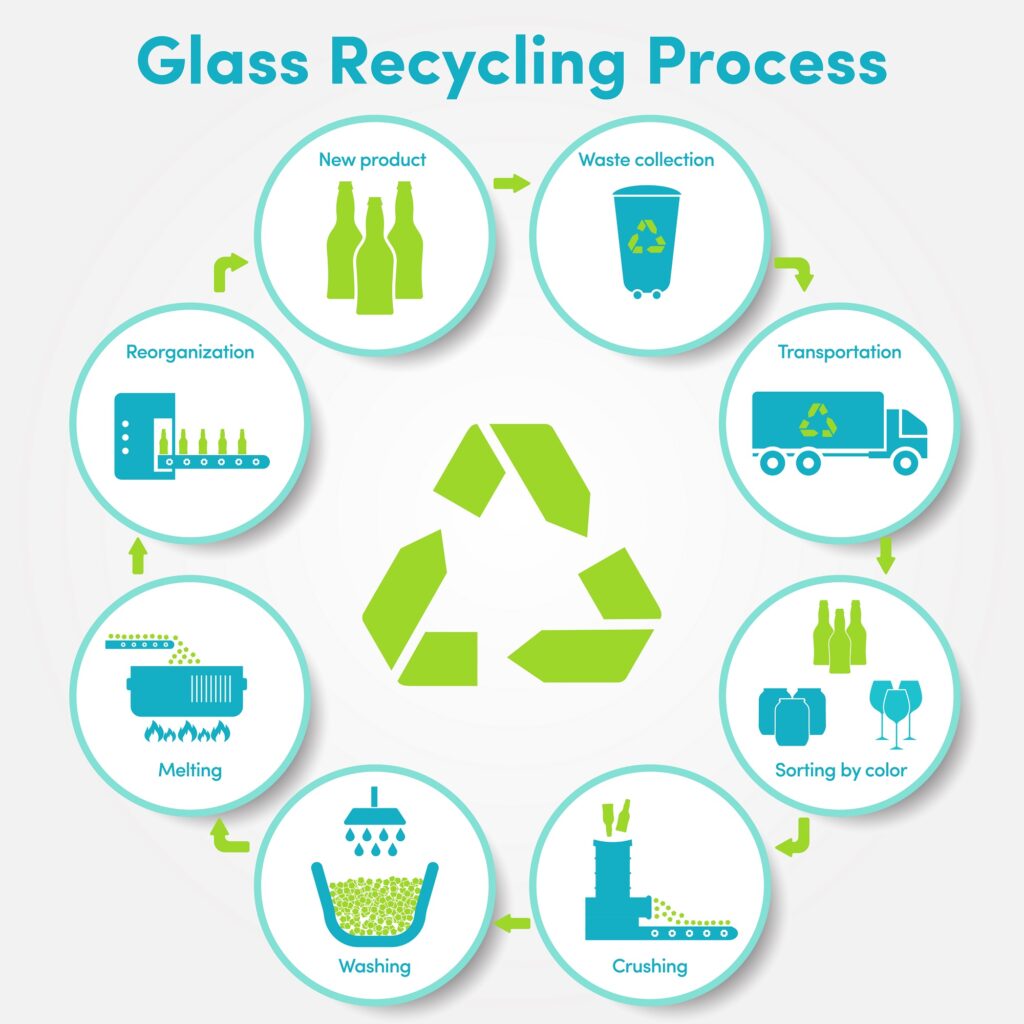A glass bottle is a bottle made from glass. Glass bottles can vary in size considerably but are most commonly found in sizes ranging between about 200 millilitres and 1.5 litres. Common uses for glass bottles include water, food condiments, carbonated soft drinks, liquor, cosmetics, pickling and preservatives. These types of bottles are utilitarian and serve a purpose in commercial industries.
Glass can be recycled endlessly by crushing, blending, and melting it together with sand and other starting materials. Doing so benefits manufacturers, the environment, and consumers. Yet each year only one-third of the roughly 10 million metric tons of glass that Americans throw away is recycled. The rest ends up in landfills. In contrast, some European countries recycle more than 90% of their waste glass. US glass-industry trade groups are working with manufacturers and government agencies to boost the numbers. These efforts begin with a top-to-bottom analysis of glass recycling to identify areas for improvement.
 Glass Art
Glass ArtGlass art refers to individual works of art that are substantially or wholly made of glass. It ranges in size from monumental works and installation pieces to wall hangings and windows, to works of art made in studios and factories, including glass jewelry and tableware.
As a decorative and functional medium, glass was extensively developed in Egypt and Assyria invented by the Phoenicians, was brought to the fore by the Romans. In the Middle Ages, the builders of the great Norman and Gothic cathedrals of Europe took the art of glass to new heights with the use of stained-glass windows as a major architectural and decorative element. Glass from Murano, in the Venetian Lagoon, (also known as Venetian glass) is the result of hundreds of years of refinement and invention. Murano is still held as the birthplace of modern glass art.
The turn of the 19th century was the height of the old art glass movement while the factory glass blowers were being replaced by mechanical bottle blowing and continuous window glass. Great ateliers like Tiffany, Lalique, Daum, Gallé, the Corning schools in upper New York state, and Steuben Glass Works took glass art to new levels.

In Mauritius, The Mauritius Glass Gallery, a company owned by Phoenix Beverages, is a Glass Foundry situated in Phoenix. In view of preserving the local environment, The Mauritius Glass Gallery was created in 1991, by the former Mauritius Breweries Ltd and Phoenix Camp Minerals. The idea behind the business was to recycle glass waste from the two companies.
Their mission as a member of the PhoenixBev Sustainability Initiative, is to continuously encourage & challenge the artistic concept behind glass recycling in terms of design and techniques. Recycled glass creations have their place amongst today’s contemporary glassware & interior designs. All items are hand-made locally by the team of glass blowers.
The company today employs around 25 persons to manufacture and supply top hotels with range of glass and tableware, companies with corporate gifts and employee awards, and the local market with interior design objects, gifts and souvenirs.
 Scaling things down slightly, glass bottles can be used for several different functions in a construction project, from an eye-catching feature window to the building blocks of the whole project.
Scaling things down slightly, glass bottles can be used for several different functions in a construction project, from an eye-catching feature window to the building blocks of the whole project.
The latter sounds ambitious, but is in fact possible, as the Million Bottle Temple in Thailand proves.

 Recycled glass is always part of the recipe for glass, and the more that is used, the greater the decrease in energy used in the furnace. This makes using recycled glass profitable in the long run, lowering costs for glass container manufacturers—and benefiting the environment.
Recycled glass is always part of the recipe for glass, and the more that is used, the greater the decrease in energy used in the furnace. This makes using recycled glass profitable in the long run, lowering costs for glass container manufacturers—and benefiting the environment.
Glass containers for food and beverages are 100% recyclable, but not with other types of glass. Other kinds of glass, like windows, ovenware, Pyrex, crystal, etc. are manufactured through a different process. If these materials are introduced into the glass container manufacturing process, they can cause production problems and defective containers.
In Mauritius estimated to be less than 1% recycled through various partners such as Glass Recycling Facts and Glass to Glass Recycling